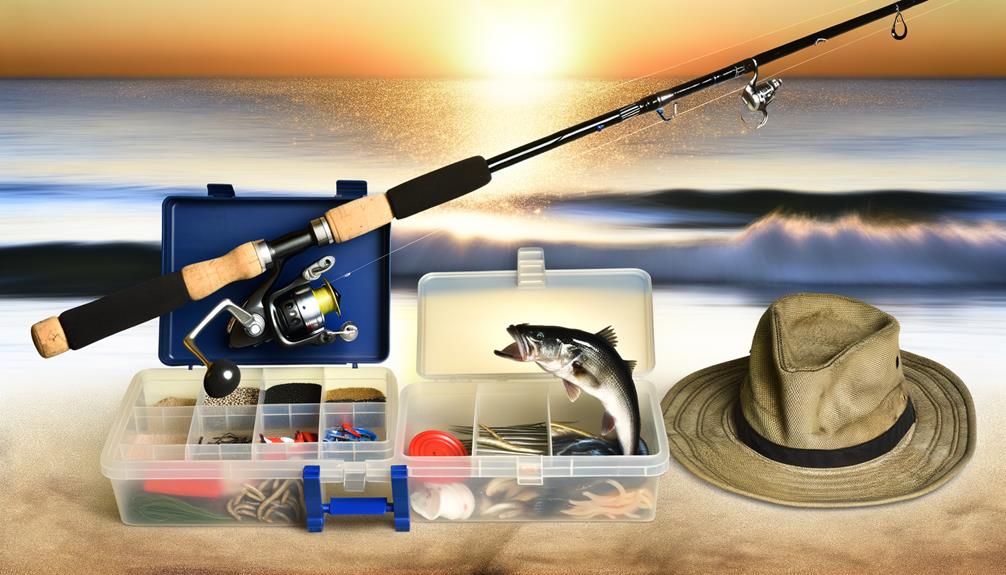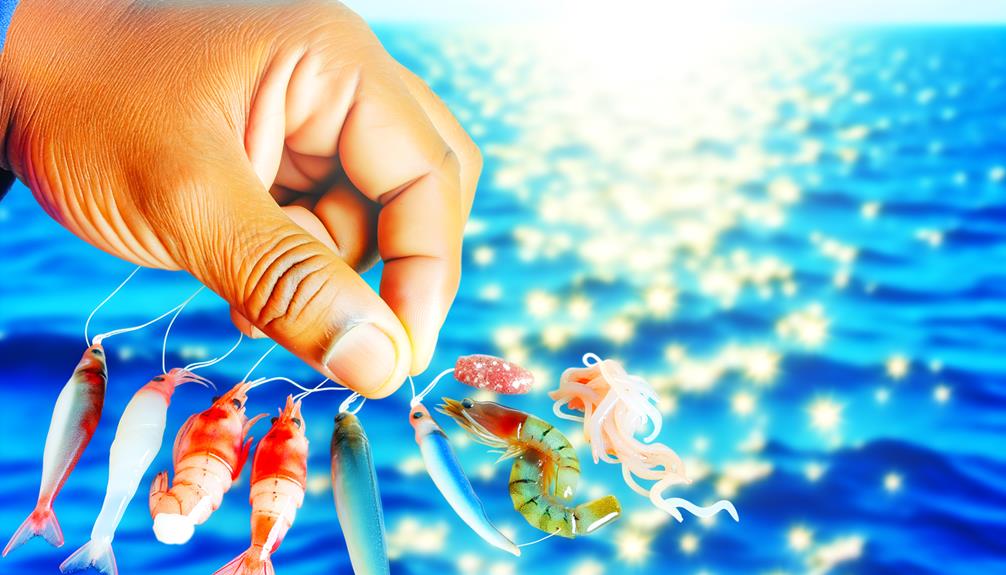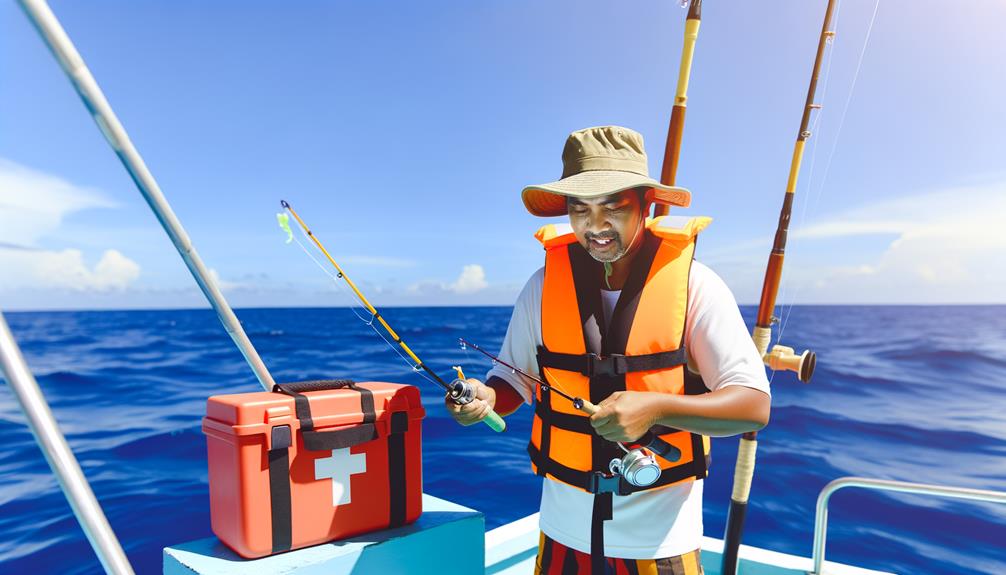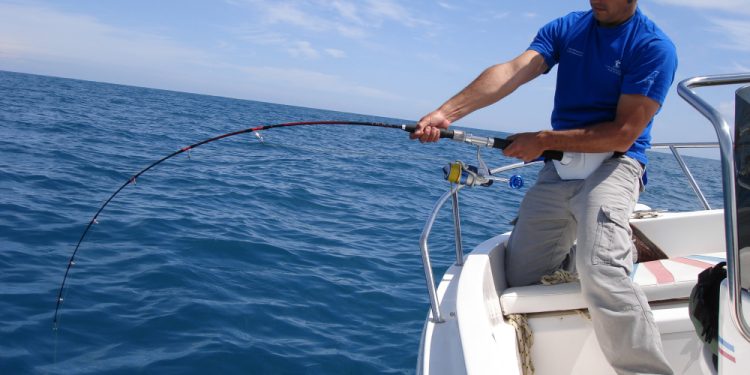Saltwater fishing, a pursuit conducted in the ocean’s vast expanse, is an enduring testament to the human spirit’s adventurous edge. This form of angling is distinctive due to the unique challenges it presents, the specialized gear it necessitates owing to the harsh oceanic environment, and the broad array of fish species it offers.
While the thought of wrestling with a hard-fighting gamefish is certainly thrilling, one must consider the skill, knowledge, and preparation required. The question then arises: what factors determine a successful saltwater fishing expedition and how can one equip oneself for this unpredictable yet rewarding venture?
Key Takeaways
- Saltwater fishing involves catching fish in high salinity environments, providing a thrilling adventure.
- There are two main types of saltwater fishing: coastal, which is beginner-friendly, and offshore, which targets larger fish.
- The success of saltwater fishing relies on the right gear, including a tailored rod and suitable bait that mimics local prey.
- Optimizing fishing techniques and timing, understanding fish behavior, and monitoring weather and tides are crucial for successful saltwater fishing.
Understanding Saltwater Fishing
Delving into the intricate world of saltwater fishing, one must first acknowledge that it is an activity conducted in high salinity environments such as the ocean, where the salinity levels often exceed 1.05%. This unique setting offers an unmatched variety of fish, with the pursuit of game fish like redfish, snook, and tarpon providing an exhilarating adrenaline rush for anglers.
Saltwater fishing rods, designed to withstand the corrosive effects of seawater, are more robust compared to those used in freshwater fishing. These tools of the trade are expertly crafted to handle the power and weight of game fish, making the challenge of saltwater fishing even more rewarding.
The setting for this sport is also diverse, with opportunities to fish from various locations such as shorelines, piers, and vessels like kayaks, canoes, and boats. Each location offers a different experience and requires a nuanced approach, further adding to the allure of saltwater fishing.
In essence, understanding saltwater fishing requires the knowledge that it is more than just a leisurely pastime. It’s a thrilling adventure, a test of skill and endurance, and a rewarding journey into the vast, salty depths of our world’s oceans.
Types of Saltwater Fishing
In exploring the types of saltwater fishing, two primary categories emerge: Coastal and offshore fishing. Each presents its own set of challenges and requires different gear, both essential aspects for successful fishing trips.
This next section will provide a comprehensive look at these two types of saltwater fishing and the equipment necessary for each.
Coastal Vs Offshore Fishing
When it comes to saltwater fishing, one can choose between two distinct types: coastal fishing, which occurs near the shore, and offshore fishing, an adventurous pursuit taking place in the open ocean. Each type offers unique experiences and targets different game fish within diverse saltwater environments.
| Coastal Fishing | Offshore Fishing |
|---|---|
| Near the shore | Into the open ocean |
| Variety of fish species | Larger game fish like marlin, tuna |
| Accessible for beginners | Requires experience and specialized equipment |
| Shorter fishing trips | Longer, challenging trips |
| Unique, close-to-land experience | Adventurous, deep-sea experience |
Choosing between coastal and offshore fishing depends on your personal preferences, skill level, and the kind of adventure you seek. Whether you prefer the accessibility of coastal waters or the thrill of the open sea, saltwater fishing offers a sense of belonging in the vast marine wilderness.
Essential Saltwater Fishing Gear
Equipping oneself with the appropriate gear significantly enhances the saltwater fishing experience, whether you’re casting from the shore or venturing into the deep sea. A good saltwater rod tailored to the fishing type, whether it’s Surf, Backwater, Bay, or Deep-Sea Fishing, is indispensable.
Fishing charters often provide guidance on the ideal gear to use. Bait and tackle shops are a treasure trove for both novice and experienced anglers, offering an array of live and artificial baits to lure your desired catch. Your choice of bait should mimic the local prey of your targeted species.
Whether it’s the thrill of deep-sea fishing or the serenity of flats fishing, having the right gear is a crucial part of the saltwater fishing experience.
Essential Saltwater Fishing Gear

In the realm of saltwater fishing, the gear one selects can significantly influence the success of their fishing excursion.
A consideration of paramount importance is the choice of fishing rod, which must be robust enough to withstand the strength of saltwater species.
Equally essential are the selection of suitable bait and a proper understanding of fishing reels, both of which can drastically enhance the efficiency of your catch.
Choosing Your Fishing Rod
Selecting the appropriate saltwater fishing rod, an essential part of your gear, requires careful consideration of several factors including the rod’s length, power, action, and its construction material. As part of the saltwater fishing community, you must understand that fishing conditions and your target species significantly influence your rod choice. Additionally, saltwater fishing rods must be made of durable materials to withstand the harsh marine environment.
Consider the following when choosing your rod:
- Choose heavier rods for larger, hard-fighting gamefish
- Longer rods (7-12 feet) offer better casting distance and leverage
- Materials like graphite or fiberglass resist corrosion and rust
- Ensure the power and action of the rod match your target species
- Specialized rods (surf, jigging, trolling) cater to different techniques and locations.
Appropriate Bait Selection
Navigating the vast array of bait options, both natural and artificial, is a critical aspect of saltwater fishing that can greatly influence the success of your angling expedition. Bait selection, determined by factors such as scent, sound, and movement, alongside fish feeding habits and specific fishing location, is instrumental in targeting distinct species.
Consider the following table for a snapshot of appropriate bait selection:
| Natural Bait | Artificial Bait |
|---|---|
| Bait fish | Lead-headed jigs |
| Crabs | Metal jigs |
| Clams | Poppers |
| Mussels | Plug fishing lures |
| Shrimp | Spoon fishing lures |
Choosing the right bait is pivotal for fishing success, attracting and enticing the desired catch. Proper bait selection not only enhances your saltwater fishing experience but also contributes to a more productive expedition.
Understanding Fishing Reels
Mastering the nuances of saltwater fishing reels, specifically engineered to resist the corrosive effects of sea water, is a fundamental aspect of any successful angling expedition.
These reels are a testament to the evolution of fishing gear, created with materials such as stainless steel and aluminum to withstand the harsh saltwater environment.
To better understand the intricacies of saltwater fishing reels, consider the following points:
- Spinning reels, known for their versatility and user-friendly nature, are ideal for beginners.
- Baitcasting reels offer precision casting and control over larger fish, favored by experienced anglers.
- Both reel types are adaptable to various fishing environments.
- Understanding the reel’s drag system, gear ratio, and line capacity is crucial.
- Always consider the reel’s overall durability when choosing your gear.
This knowledge will surely enhance your saltwater fishing experience and increase your chances of a bountiful catch.
Selecting the Right Bait

In the realm of saltwater fishing, the choice of bait – whether live options like bait fish, crabs, clams, mussels, and shrimp, or artificial ones such as lead-headed jigs, metal jigs, poppers, plug fishing lures, and spoon fishing lures – plays a pivotal role in enticing various fish species and significantly impacting the success of your angling excursions.
Bait selection is a strategic process, informed by an understanding of the specific fish preferences, feeding habits, and the unique characteristics of the fishing location. The scent, sound, and movement of the bait all contribute to its appeal, calling out to the curious and hungry fish in the vast saltwater environment.
Choosing the right bait type aligns with the behavioral preferences of your target fish species. For instance, some fish are more attracted to the lively squirm of live bait, while others are enticed by the gleam and motion of artificial lures.
In saltwater fishing, the journey towards a successful catch starts with a thoughtful bait selection. It is, indeed, a blend of science, experience, and intuition that sets an accomplished angler apart.
Reading Weather and Tides
Just as the appropriate bait selection can make or break your angling success, so too does an adept understanding of weather patterns and tidal movements significantly influence the outcome of your saltwater fishing endeavors. For saltwater anglers, having a comprehensive grasp of the day’s weather forecast and tide charts is essential for maximizing catch rates while ensuring safety.
- An understanding of weather patterns is crucial to anticipate fish behavior and adapt your fishing strategies accordingly.
- Monitoring tides can help determine the optimal time to fish based on water movement.
- High tides are perfect for targeting fish near structures like jetties, whilst low tides expose underwater features and channels.
- Utilizing weather apps and tide charts can provide invaluable data for planning your fishing trips.
- Being aware of changing weather conditions is necessary to adapt on the fly and maintain fishing productivity.
Safety Measures in Saltwater Fishing

Ensuring safety during saltwater fishing expeditions is paramount, necessitating diligent adherence to certain precautions while on the water. One of the most crucial safety measures includes the consistent use of a life jacket, which provides a life-saving buoyancy in the unfortunate event of an accident.
Prior to casting off, it is not only wise but essential to check weather forecasts. This allows anglers to steer clear of sudden storms that could jeopardize their safety. Carrying necessary safety equipment such as a first aid kit and emergency supplies affords an additional layer of reassurance.
Informing someone on land about your fishing plans further enhances your safety measures. It ensures that if anything goes awry, there will be someone aware of your whereabouts, able to raise an alarm.
Popular Saltwater Fish Species
Numerous saltwater fish species, each with unique characteristics and behaviors, allure anglers worldwide, making saltwater fishing an exciting and diverse pastime. These marine creatures, ranging from the robust Redfish to the elusive Southern Flounder, provide both a thrilling challenge and a rewarding catch.
Here are five popular species that have captivated the angling community:
- Redfish (Red Drum): Known for their powerful fights, these fish are a popular choice among anglers, often found in estuaries and coastal waters.
- Southern Flounder: These flatfish, with their unique appearance and camouflage abilities, add an element of surprise to the fishing experience.
- Black Drum: Large and hard-fighting, these fish are commonly found near coastal areas and structures, making for an exciting catch.
- Speckled Trout (Spotted Seatrout): Prized gamefish, their speckled appearance and challenging nature draw many to the sport.
- Sand Seatrout: A close relative of Speckled Trout, they are sought after for their delicious white meat and exciting fights in sandy coastal areas.
These species highlight the rich diversity of saltwater fish, making every fishing trip an adventure. Whether you are a novice or an experienced angler, the thrill of saltwater fishing awaits in the vast, open coastal waters.
Frequently Asked Questions
What Is the Meaning of Saltwater Fishing?
Saltwater fishing involves utilizing specific techniques and equipment to catch fish in marine environments. This activity necessitates safety measures and promotes marine conservation, fostering a sense of community among those passionate about the sea’s bounty.
What Is the Difference Between Saltwater and Freshwater Fishing?
Saltwater and freshwater fishing differ in species targeted, techniques used, tackle maintenance due to corrosive environments, and licensing requirements. Saltwater fishing often involves larger species and more challenging conditions, requiring specialized knowledge and equipment.
What Is the Difference Between Freshwater and Saltwater Fishing Line?
Saltwater fishing lines differ from freshwater due to superior line durability and material consideration. Specifically designed to resist salt corrosion, they offer enhanced line visibility and knot strength, perfect for larger, tougher saltwater gamefish.
What Do You Mean by Saltwater Fish?
Saltwater fish refers to diverse species inhabiting oceanic ecosystems, contributing significantly to marine biodiversity. These fish, critical to marine fishing ethics, require preservation efforts to maintain their populations and the health of their saltwater habitats.
Conclusion
In essence, saltwater fishing offers an exhilarating escapade, challenging the angler’s abilities against the might of marine monsters. It demands detailed deliberation in gear selection, bait choice, and weather interpretation.
Adhering to safety standards secures serene experiences at sea. Understanding and appreciating the array of aquatic species enhances the angler’s experience.
The quest for these magnificent marine marvels in the vast, volatile ocean is a compelling call to the adventurous angler, making saltwater fishing a thrilling endeavor.





